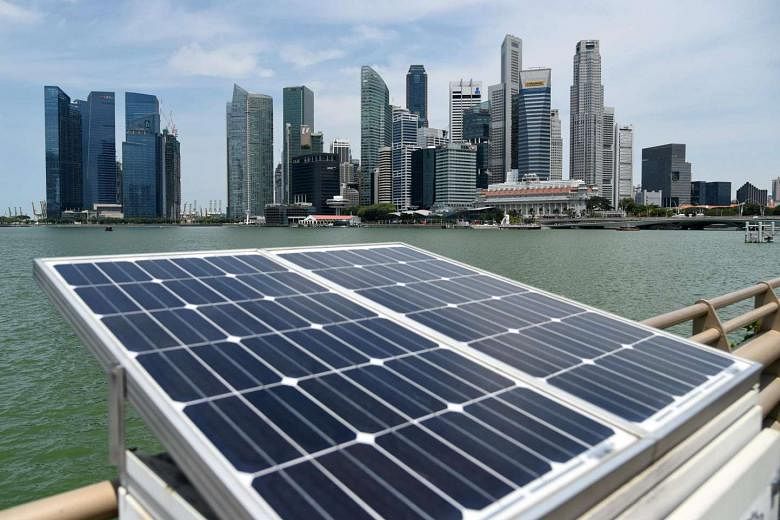SOLAR
Solar cells harness light and heat from the sun and convert them into energy. Solar power has been touted as the most promising source of renewable energy for Singapore.
However, it accounts for less than 1 per cent of the electricity consumed here, due to high costs and land constraints in installing solar panels. The Government aims to make it 5 per cent by 2020.
Take its SolarNova programme, which aims to increase solar demand across government agencies. Under the scheme, the Housing Board has committed to a target of 220MW, by generating power through solar panels at 5,500 blocks.
WIND
The movement of wind through special turbines generates electricity. Wind power generation in Singapore faces difficulties of space constraints and low wind speeds.
While commercial wind turbines operate at wind speeds of above 4.5m per second, the average in Singapore is only about 2m per second.
But Nanyang Technological University (NTU) researchers are working on turbine designs that could tap wind energy in Singapore's climate, and be installed along the coastline or on islands such as Pulau Semakau.
FUEL CELLS
Fuel cells convert the chemical energy of a type of fuel, typically hydrogen, into electricity, generating heat and water in the process.
It is more expensive than oil and gas, due to the high cost of extracting and purifying hydrogen, but its emissions are far cleaner.
JTC Corp's CleanTech One building is powered by a fuel cell plant. NTU researchers are also exploring how the technology can be used to fuel drones.
ELECTRIC VEHICLES
These run on rechargeable batteries and release no tail-pipe air pollutants.
There are only about 120 electric and plug-in hybrid vehicles here today, but NTU researchers believe they could make up as much as 30 per cent to 50 per cent of Singapore's motor population by 2050. This could cut vehicle pollution by as much as 30 per cent.
Early this month, the authorities appointed BlueSG, a subsidiary of French electric car-sharing operator Bollore Group, to run a fleet of 1,000 cars by 2020 under a national electric car- sharing programme.
WASTE TO ENERGY
This converts solid waste into energy via combustion, reducing the volume of waste along the way.
Singapore has four waste-to- energy plants - Tuas, Senoko, Tuas South and Keppel Seghers Tuas - as well as the Semakau Landfill. Another is being built by Hyflux and Mitsubishi Heavy Industries in Tuas.
MICROGRIDS A microgrid is a self-contained power system of solar panels and batteries. Small-scale and able to sustain itself, it can provide electricity to remote areas.
The Energy Market Authority is piloting a microgrid test-bed at the jetty area of Pulau Ubin.
SMART CITIES AND ENERGY EFFICIENCY
A smart city is a vision of urban development which uses big data and other advances in technology to improve the quality of life for residents.
In Singapore, the Govern- ment's Smart Nation Programme Office oversees the smart city push. The goal is to be more energy-efficient by reducing the heat generated by the environment, such as by cutting down on congestion or building naturally cooler homes.

